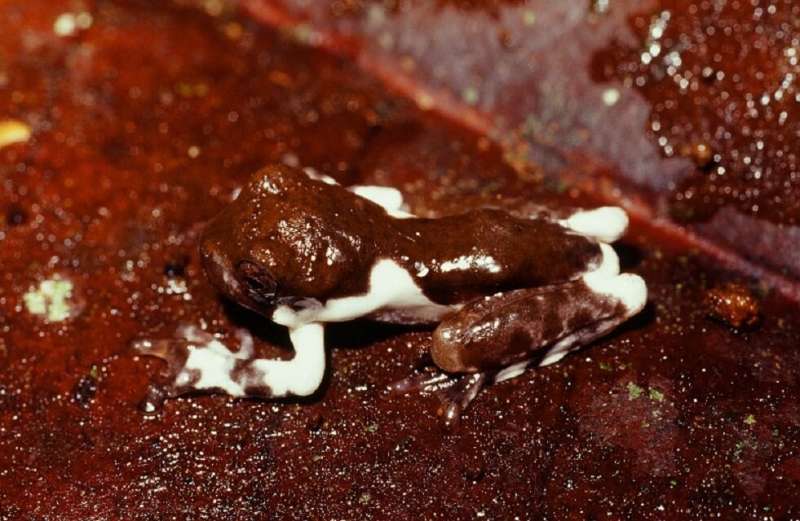This article has been reviewed according to Science X's editorial process and policies. Editors have highlighted the following attributes while ensuring the content's credibility:
fact-checked
peer-reviewed publication
trusted source
proofread
Researchers get the drop on new frog species

Five new species of frogs, including one with camouflage that makes it look like bird droppings, have been described by Australian scientists.
Scientists from Griffith University, Queensland Museum and South Australian Museum recently described the five species of treefrogs from Papua New Guinea. The research, "Five new species of the pelodryadid genus Litoria Tschudi from the southern versant of Papua New Guinea's Central Cordillera, with observations on the diversification of reproductive strategies in Melanesian treefrogs," has been published in Zootaxa.
Griffith University scientist Dr. Paul Oliver, a joint appointee with Queensland Museum, said the new species highlighted the remarkable and poorly understood diversity of New Guinea frogs.
"These small tree frogs lay their eggs out of the water, typically on leaves, quite different to your typical treefrog, which lay their eggs directly into water," Dr. Oliver said.
"Tadpoles of one new species, Litoria naispela actually live in water collected in tree hollows, a behavior not previously documented in frogs from New Guinea.
"Litoria naispela also has juveniles that have color and patterning that closely resembles bird droppings—we think this is a form of defensive masquerade."
The five new species are named Litoria daraiensis, Litoria gracilis, Litoria haematogaster, Litoria lisae and Litoria naispela.
They all come from very wet mountain forest areas along the central mountain range of New Guinea.
The five frogs were collected over 30 years by lead author South Australian Museum Honorary Researcher Dr. Steve Richards.
"I spent a huge amount of time waiting at night beside tree holes in rain, hail and (moon)shine, for frogs to emerge in order to find these amazing species, and to try and learn about their biology," Dr. Richards said. "New Guinea has more species of frogs than any other island in the world and most are found nowhere else."
More information: Stephen J. Richards et al, Five new species of the pelodryadid genus Litoria Tschudi from the southern versant of Papua New Guinea's Central Cordillera, with observations on the diversification of reproductive strategies in Melanesian treefrogs, Zootaxa (2023). DOI: 10.11646/zootaxa.5263.2.1
Journal information: Zootaxa
Provided by Griffith University





















